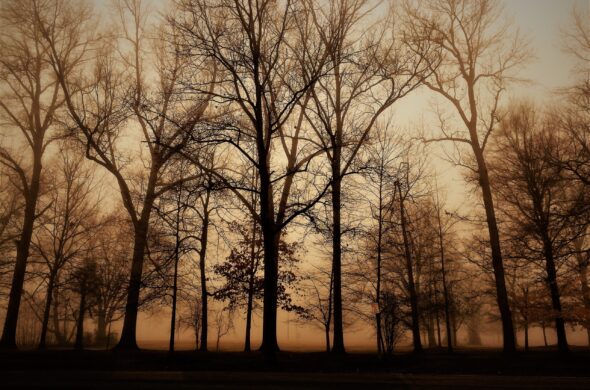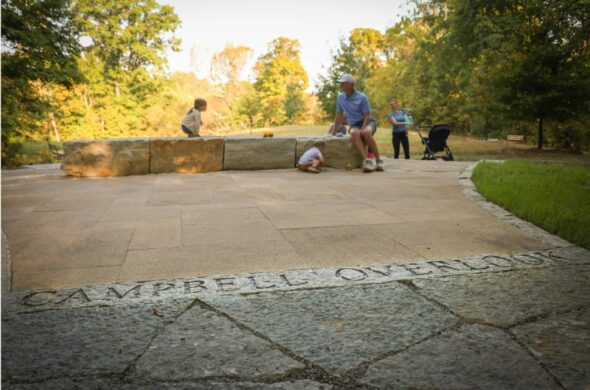It’s December, and while our well-behaved plant allies like goldenrod and coneflower have gone to seed, there are some sneaky interlopers in our midst. Invasive vines like English ivy, winter creeper and periwinkle get the full benefit of the sun in winter months when deciduous plant life is dormant. It’s the perfect time for them to climb trees and smother the forest floor! Fortunately, their evergreen color stands out against the winter landscape and signals to our Team for Healthy Parks where removal is needed most.

In larger parks like Cherokee, it’s not realistic to think that we could completely eradicate these invasive vines. Over the years, homeowners have used these plants in landscaping and they spread easily into natural areas. Treatment plans instead focus on pushing invasive vines out of the most high-quality areas so that native spring wildflowers have a chance to pop up as soon as temperatures begin to rise. Winter is the perfect time to treat these evergreen invasives with herbicide, since native species have dropped their leaves for the year. This means that herbicide we apply can only affect the non-natives and will have broken down long before our native wildflowers emerge in the warmer months.

The Wildflower Woods trail in Cherokee Park is a great example of what we can accomplish with invasive plant removal. In the spring, the site is full of spring ephemerals like Dutchman’s breeches and wood poppy. These delicate flowers would be easily crowded out by evergreen vines. By monitoring the area and quickly treating invasive plants in this magnificent section of the park, we can ensure that a wide variety of native plants get a leg up on the competition from non-native invasive species.
The Team for Healthy Parks works year-round, aided by our dedicated park stewards and volunteers, to foster biodiversity and sustainability in the Olmsted Park System!
Find something similar: News Cherokee Park Iroquois Park Shawnee Park









